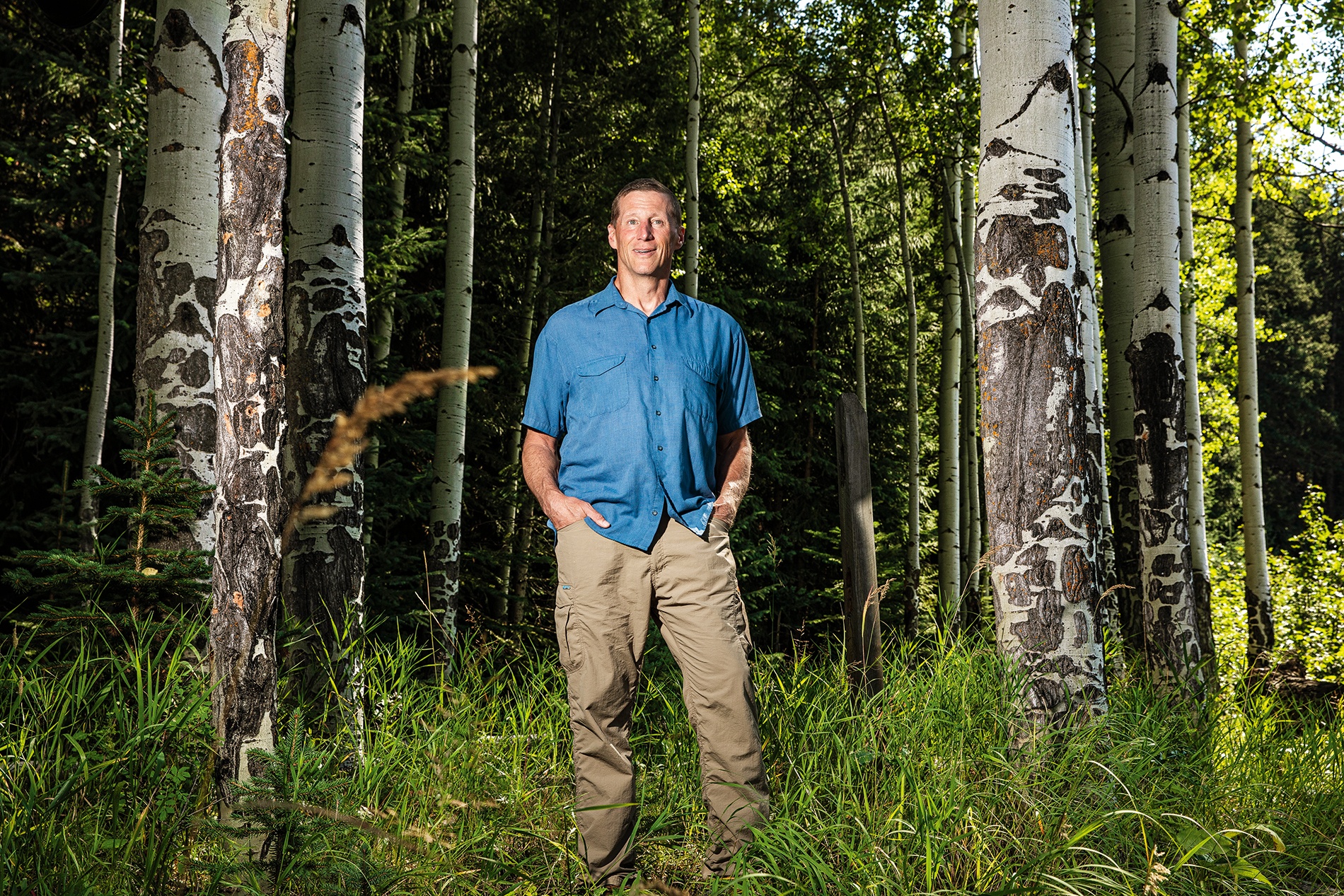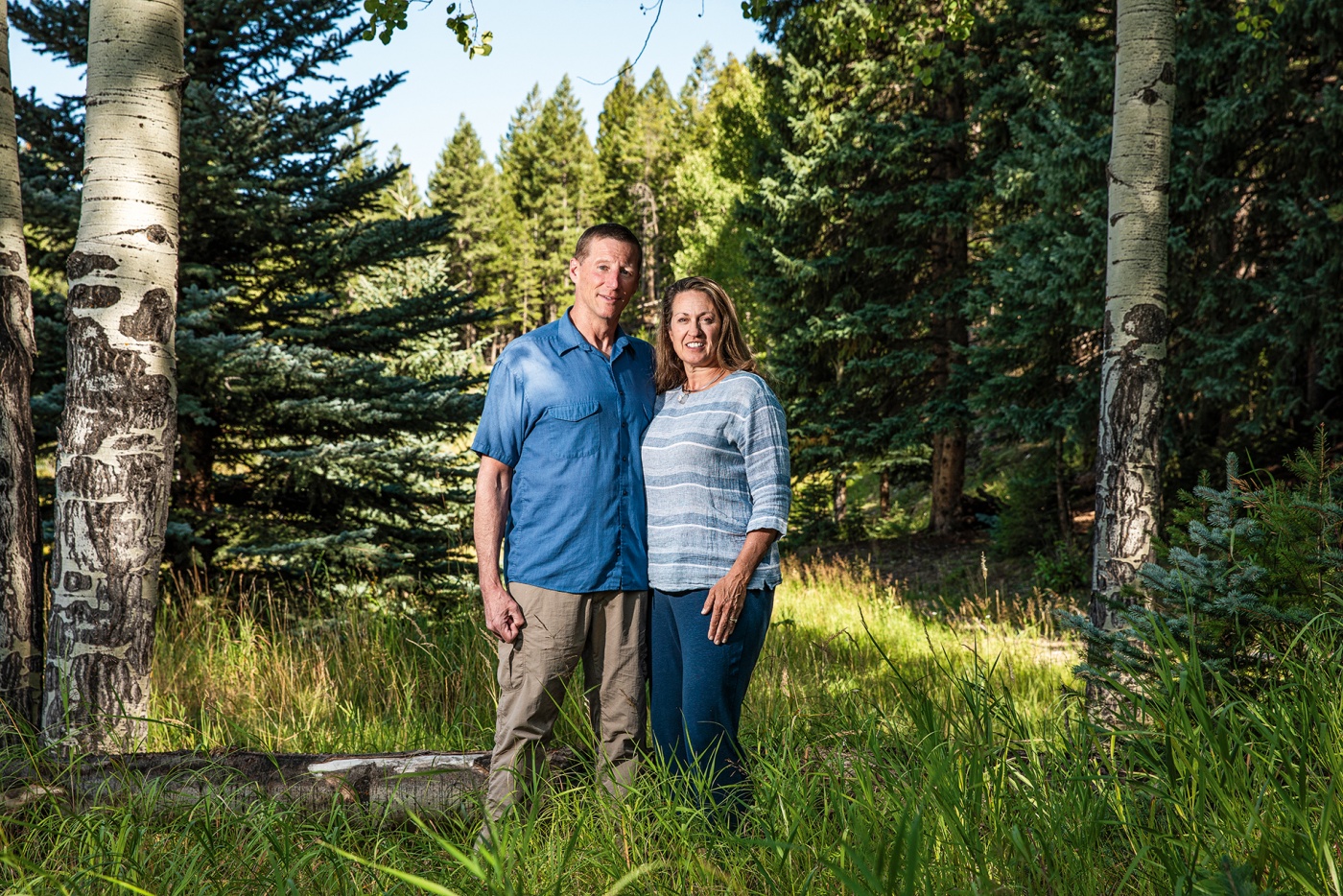
Extreme Medicine
ER doctor and self-described “adrenaline junkie” Gregory Stiller ’90 provides care under some of the most difficult conditions in the world.
In 2011, Gregory Stiller ’90 was living with his wife, fellow doctor Tracy Stiller, and their kids in the Himalayas as they worked temporarily as emergency physicians for the Mount Everest climbers base camp. One day, he got word that a hiker had fallen off one of the flimsy rope bridges between mountains into the rocks below. With nothing but a backpack of gear he strapped to a donkey, Stiller hiked alone for three hours until he found the climber, unconscious and bleeding in various places. “I had to do a full trauma evaluation by myself, with no imaging equipment,” he recalls. He stabilized the patient’s bleeding and gave him air through a bag valve mask. Then he sat with the patient until he was taken away in a helicopter (where, sadly, he died).
It may sound like one of those rare stints that U.S. doctors do to break up their routine. But in fact, such far-flung medical assignments—both for civilian groups like the Everest Base Camp and for the Air Force National Guard, which a medical colleague recruited him into because he’d had previous training in how to doctor amid chemical and biological warfare—have been a regular part of Stiller’s life since he became an emergency medicine physician in Colorado decades ago. “I enjoy caring for our military members, the new experiences, and serving a larger cause,” he says.
Sometimes with his wife and family (which includes his daughter, Tylin Stiller ’21, now in med school) and sometimes alone, Stiller has devoted months at a time to emergency medicine gigs in Antarctica, Mount Kilimanjaro in Tanzania, a U.S. military base in Turkey just after that country’s 2016 coup attempt, Houston after Hurricane Harvey, and Afghanistan in the early months of Covid. He’s served at the Everest Base Camp more than once. Earlier this year he returned from Saudi Arabia, where he was deployed as part of a six-person ground surgical team for the U.S. Prince Sultan air base near Riyadh.
“I’m an adrenaline junkie,” admits Stiller, who concentrated in biology at Brown, went to SUNY Buffalo for med school, and got his first taste of non-hospital emergency medicine when, while doing a medical fellowship in New York City, he was deployed to Ground Zero right after 9/11. “I was an ER doctor already, but it was destruction on a huge scale that I’m not sure anyone was prepared for,” he recalls. He directed a group of paramedics who were on the “bucket line” with firefighters, carefully pulling back debris to look for survivors. Finding none, they ended up treating firefighters for cuts, scrapes, and eye irritation before they were sent back. (Stiller says he thinks he’s thus far avoided 9/11 first-responder health problems himself because he was wearing full PPE that day, including a respirator.)
“It’s been valuable for our children to understand that there’s a bigger world out there than themselves, and that we use our skills to help all of humankind.”
The trauma of that experience turned him off NYC, with its nerve-racking crowds, so he and his burgeoning family moved to Colorado, where they’ve been based ever since. But both the rush and the altruistic aspect of practicing emergency medicine outside the relatively sophisticated context of a hospital got under his skin, leading to his subsequent forays. “You usually don’t have a CT Scan, an MRI, an ICU, special consultants or nurses,” he says of such expeditions. “You don’t even have a monitor because there’s no electricity.” Thus, he says, the job becomes about doing everything he can until, hopefully, a patient can be medically evacuated to a proper hospital. “You might be working out of a building,” he says, “or maybe just a tent.”
Despite the limited support, the procedures he has faced include everything from opening up someone’s chest after a gunshot wound (he’d leave the actual internal repair to another surgeon) and putting in central lines, to cutting someone’s throat to put in an airway (as he did with the patient who fell from the bridge), plus all kinds of suturing and reducing fractures and dislocations. That’s not to say he doesn’t enjoy his longtime “day job” in a hospital ER. “It’s a pure form of medicine because you take care of people regardless of whether they have insurance, which is rewarding,” he reflects. For better or worse, he adds, “the ER is a Band-Aid for our healthcare system because people without coverage go there for health needs, so you can make a huge impact on people’s lives.”
But, he says, he loves the challenge of responding to health crises in settings where he isn’t able to do full surgery and the bulk of his job is to stabilize someone until they can get to a full-treatment setting. In Antarctica in 2014, he was a flight surgeon for transport pilots and crew based out of the McMurdo research station. “It was very austere and we ran our own X-rays and labs, without technicians,” he recalls. With injured folks, he’d have to decide if they should stay there or be transported to New Zealand, as was the case with someone needing an appendectomy. “The hardest things to evaluate were head injuries and belly pain,” he says, “because we didn’t have a CT scan.”

And even though he’s never been seriously injured on such jobs, he admits that the conditions can be, well, spartan. And that’s inside the U.S. When he was working in Houston after Hurricane Harvey, for instance, helping evacuate patients from local hospitals to those elsewhere, “I lived on the airport tarmac for a week.”
Stiller says he and Tracy have tried to bring their kids along with them on assignments whenever they can. But asked why he’s chosen a life full of more risk and more time away from family than most U.S. doctors, he says that, in addition to his adrenaline addiction, it’s a form of service. On the military side, he says, “every single person I take care of is committed to protecting our country, so I feel that they deserve the best care. I will continue going on military training assignments and at times may be asked to go on active duty status or deploy in the future.” On the civilian side, which includes volunteer gigs throughout the U.S.—the closest to home involve providing wilderness medicine in Colorado’s mountains—he says, “It’s been valuable for our children to understand that there’s a bigger world out there than themselves, and that we use our skills to help all of humankind.”
Tracy agrees. “We’ve always been a good team,” she says. She recalls climbing Mount Kilimanjaro with him to celebrate their tenth wedding anniversary. On their way back down, they encountered someone who’d been left behind by his group. (Such abandonments “are common, even if they’re becoming less so,” she says.) The man was stumbling, leading the couple to determine that he had swelling in his brain, which happens at high altitudes. They gave him meds that they had with them and helped him get back to base.
“Who knows what would’ve happened to him otherwise,” she says. And, she adds, such forays help them keep their lives in perspective. “We can get so wrapped up in the day-to-day, paying bills and going to the grocery store,” she says. “When you do this work, you look outside yourself and it makes your world bigger.”
Stiller seconds that. “We want to live meaningful lives,” he says, “and help as many people as we can.”
Tim Murphy ’91 is the author of novels Christodora, Correspondents, and Speech Team. [email protected]




